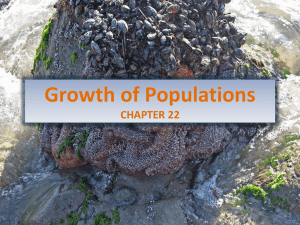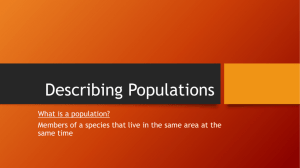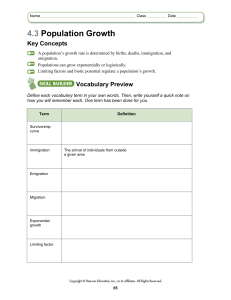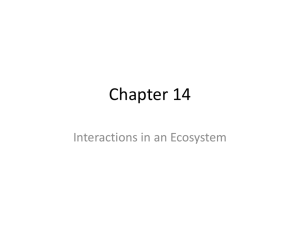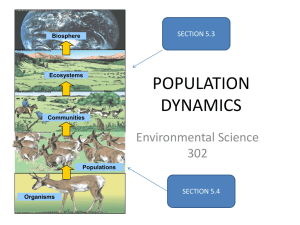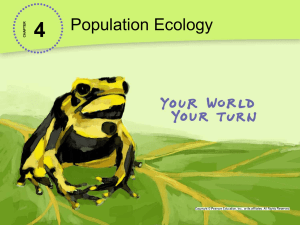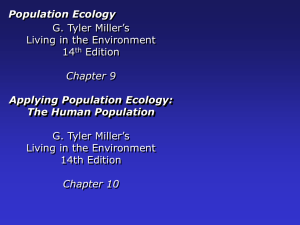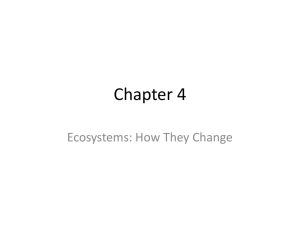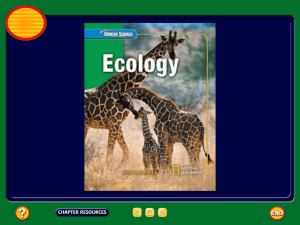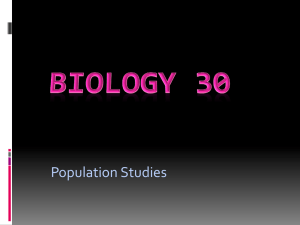POPULATION DYNAMICS
advertisement
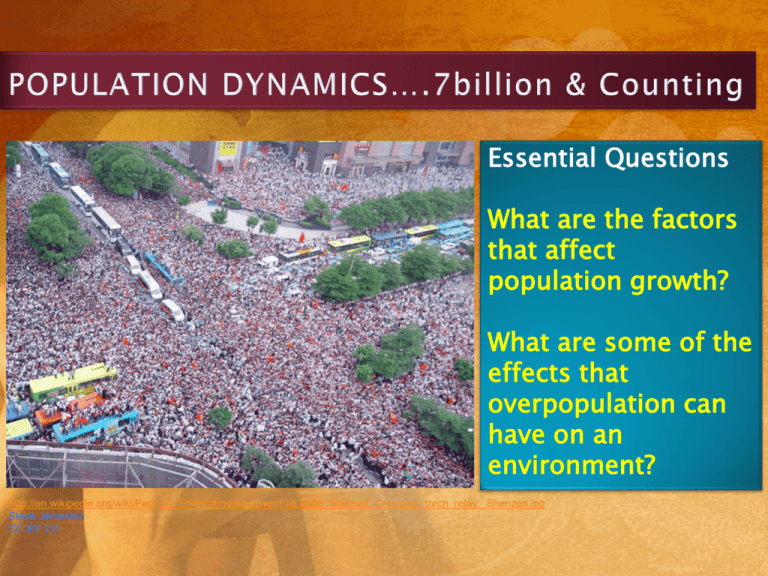
Essential Questions What are the factors that affect population growth? What are some of the effects that overpopulation can have on an environment? http://en.wikipedia.org/wiki/Paul_R._Ehrlich#mediaviewer/File:2008_Summer_Olympics_torch_relay,_Shenzen.jpg Steve Jerveston CC BY 2.0 one smallest group individual of unit organs of living living all organisms interacting similar different of cells the living and large region with things working thing organized kinds same populations kind of together tissues to living inwork anin nonliving things characteristic plants together working one ecosystem together interacting within and area animals that a certain includesarea several ecosystems cell Populations in Ecosystems Vocabulary • Abiotic Factors – Non-living components of an area (rocks, weather, sunlight, etc.). • Biotic Factors – Living organisms as well as the products of living organisms. • Carrying Capacity – The maximum size of a population that can be sustained by any given ecosystem. • Ecosystem – Living and non-living factors interacting within a specific area. • Organism – A living thing. Populations in Ecosystems Vocabulary • Environment – The area around an organism including living and nonliving things. • Limiting Factor – Any biotic or abiotic factor that controls population size. • Population – All of the interacting individuals of one species in a given area. • Birth Rate – Number of individuals born per 1000 individuals in a population. • Death Rate – Number of individuals that died per 1000 individuals in a population. How populations change in size over time – four major factors Birth Rate: Death Rate Immigration: (number of live births per 1000 individuals) (number of deaths per 1000 individuals) (movement into an area) Emigration: (movement out of an area) How can How can How can the How can the immigration emigration affect birth rate affect death rate affect affect population population size? population size? population size? size? Population Size What goes up must come down •Increases in population: through birth or immigration •Decreases in population: through death or emigration. Change in Population = Can you think of something in nature that exhibits exponential growth? Logistic growth? Populations will follow two general paths: “Boom and Bust” • When faced with unlimited resources, it will grow exponentially. • When faced with limited resources, it will grow logistically. https://www.boundless.com/biology/population-and-community-ecology/environmental-limits-to-populationgrowth/exponential-growth/ CC By 3.0 “Boom then Stable” Can you think of some resources that could limit population growth? Characterize these resources as abiotic or biotic. • Populations grow rapidly with ample resources (biotic potential), but as resources become limited (environmental resistance), population growth rate slows and levels off. • Carrying Capacity (K) is the maximum number of organisms that an area can support for longer lengths of time. Exponential and Logistic Population Growth: J-Curves and S-Curves • As a population levels off, it often fluctuates slightly above and below the carrying capacity. By the year 2020, 9 to 10 billion humans are expected to inhabit the planet. Do you think the world is overpopulated? Check out the link below for a great video on the topic! http://overpopulationisamyth.com/



